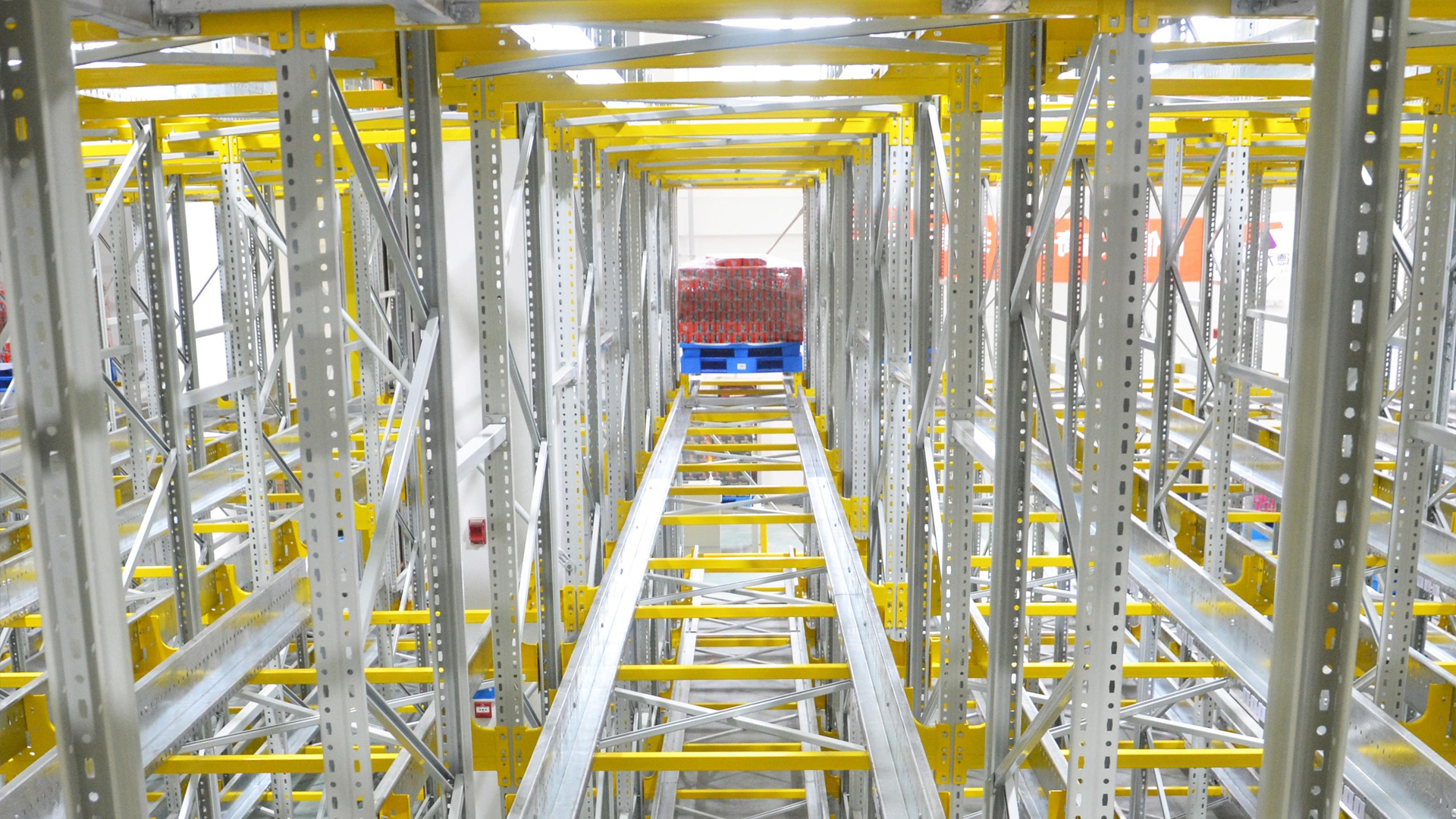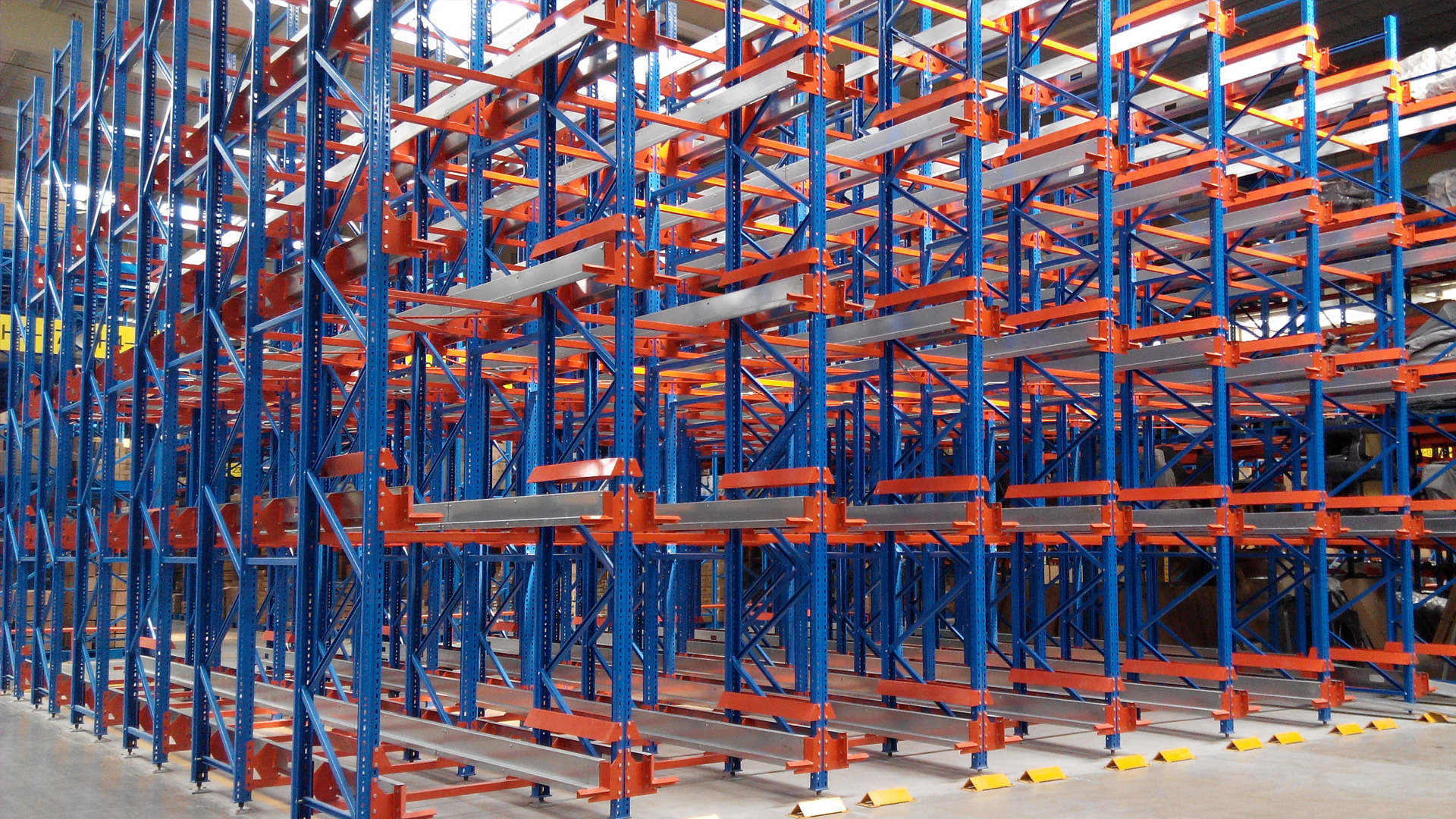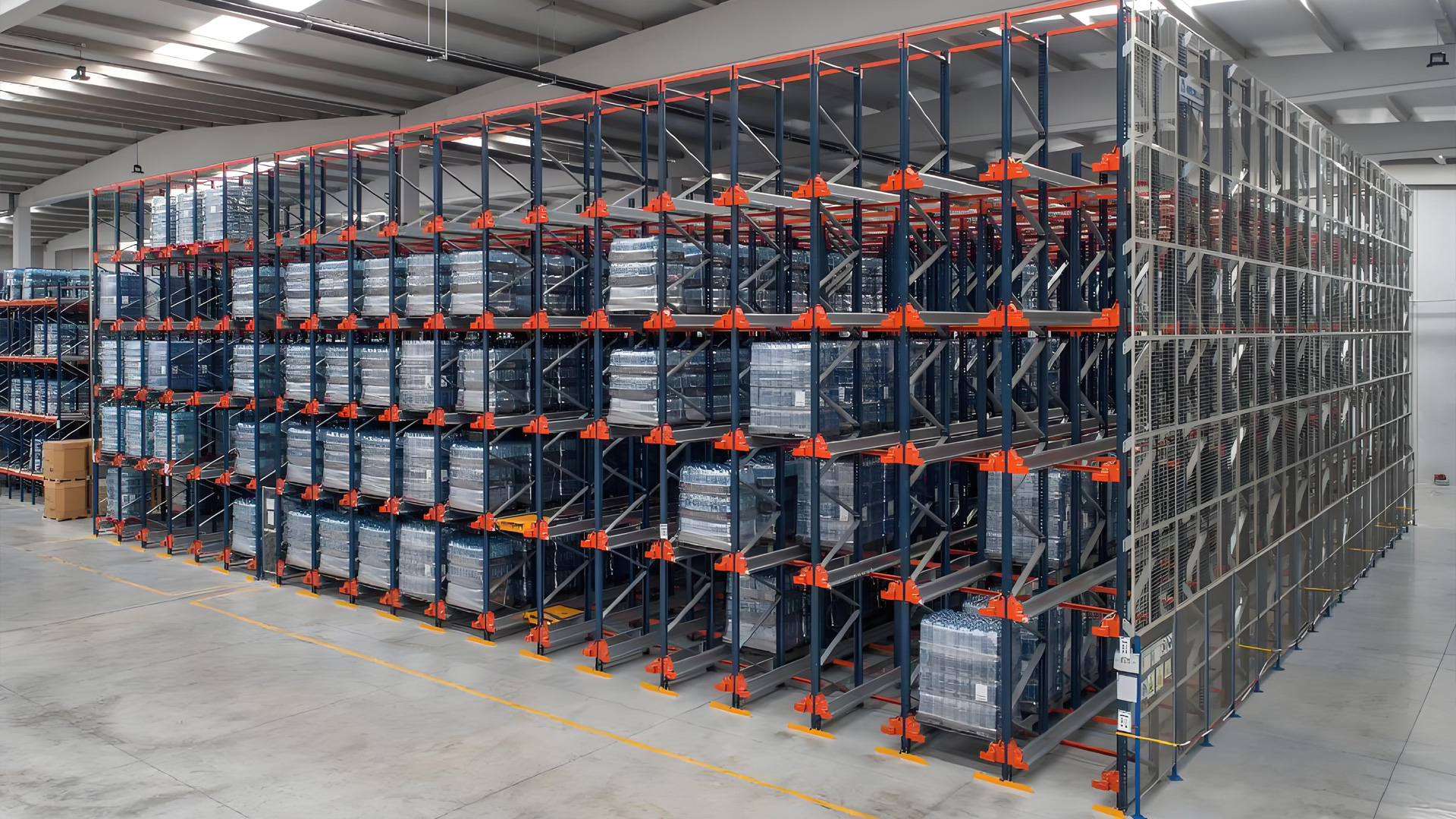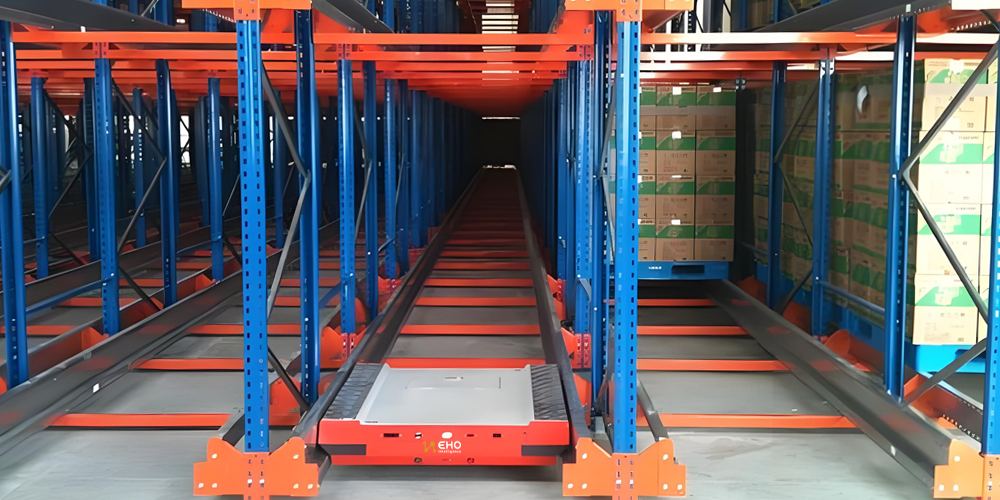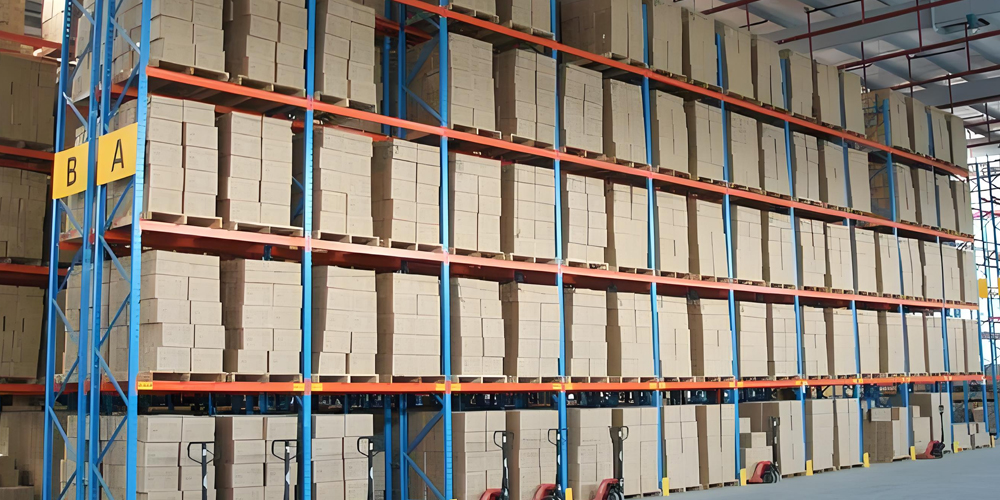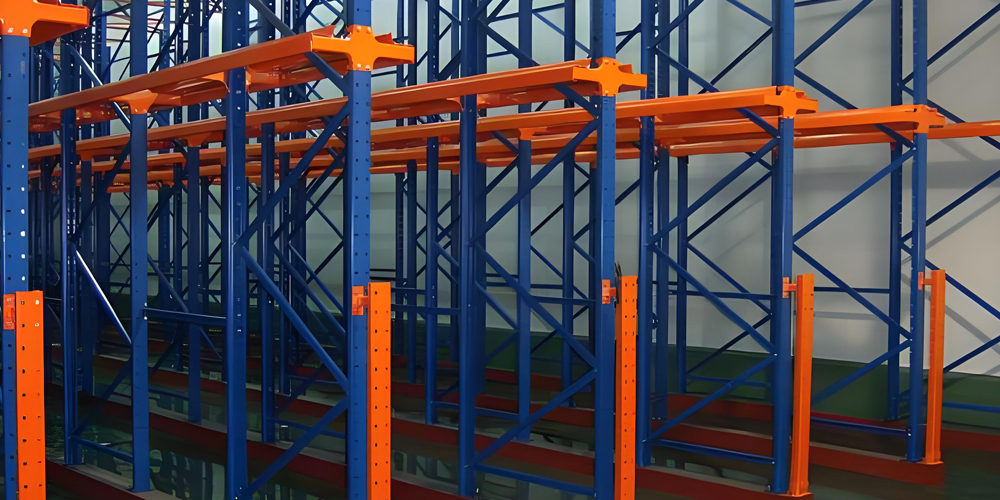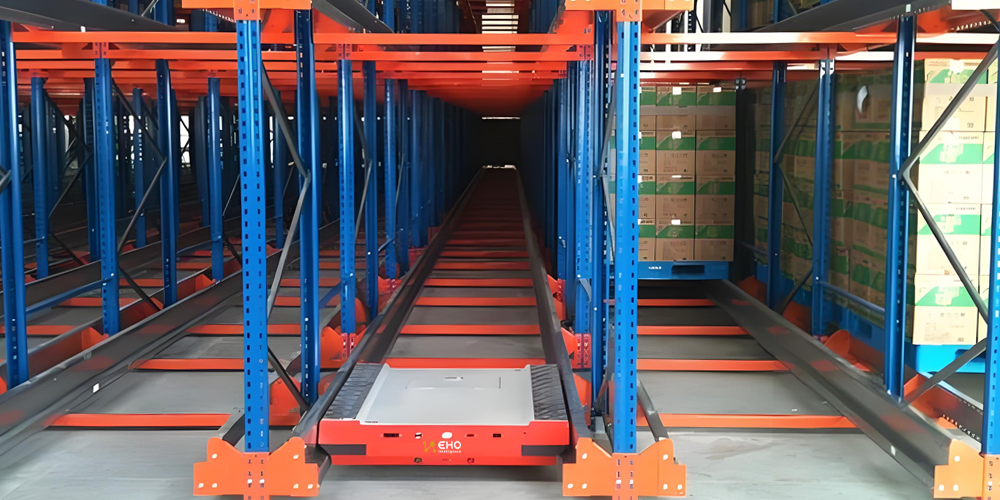Pallet shuttle racking, also known as dynamic racking or rail-guided shuttle systems, is an advanced storage solution designed to maximize warehouse space efficiency. This system utilizes automated shuttle carriers that move horizontally along dedicated rails inside the racking structure, transporting pallets between storage positions. Operated either manually, via remote control, or integrated with Warehouse Management Systems (WMS) for fully automated operations, pallet shuttle racking significantly enhances storage density and retrieval efficiency.
Advantages of Pallet Shuttle Racking:
-
Increased Storage Capacity: By eliminating the need for aisles between racks for forklift access, pallet shuttle systems enable higher storage density. This results in a more efficient use of warehouse floor space, allowing businesses to store more goods within the same footprint.
-
Improved Safety: Automated shuttles reduce the need for human operators to enter narrow aisles, thereby minimizing the risk of accidents. The controlled environment and predictable movement patterns of the shuttles contribute to a safer workplace.
-
Enhanced Productivity: Automated retrieval and storage processes can significantly speed up operations, reducing the time taken to access inventory. This leads to shorter order fulfillment cycles and improved overall warehouse productivity.
-
Cost-Effective: While the initial investment may be higher compared to traditional racking systems, the long-term savings from increased storage capacity and reduced labor costs can make pallet shuttle racking a cost-effective solution.
-
Energy Efficient: Automated shuttles are typically powered by electricity, often with energy-saving features such as regenerative braking, which captures energy during deceleration to recharge the battery. This contributes to lower operational costs and a reduced environmental impact.
Disadvantages of Pallet Shuttle Racking:
-
High Initial Investment: The cost of installing a pallet shuttle racking system, including the shuttles themselves, the racking structure, and any necessary automation software, can be substantial.
-
Complexity of Maintenance: Automated systems require regular maintenance and potential repairs, which may involve specialized knowledge and tools. Downtime for maintenance can impact warehouse operations.
-
Limited Flexibility: Once installed, making changes to the racking layout or integrating new technology can be challenging and costly. This limits the system's adaptability to evolving business needs.
-
Dependency on Technology: The reliance on automated technology means that any system failures or software issues can disrupt operations. Backup systems and contingency plans are crucial to mitigate this risk.
-
Training Requirements: Operators and maintenance personnel need specialized training to effectively use and maintain the system, which adds to the overall operational cost.
In conclusion, pallet shuttle racking offers significant advantages in terms of space efficiency, safety, productivity, and cost-effectiveness over the long term. However, it does come with its own set of challenges, particularly regarding initial investment, maintenance complexity, and technological dependency. When considering this system, businesses should weigh these factors against their specific needs and resources to determine if it is the right fit for their warehouse operations.





